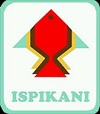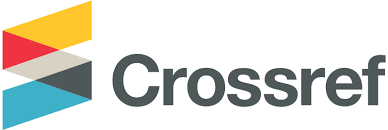Analisis Spasial Risiko Pemutihan Terumbu Karang di Wpp Indonesia Menggunakan Data Kejadian Marine Heatwaves
Abstrak
Terumbu karang yang tersebar di Wilayah Pengelolaan Perikanan (WPP) Indonesia merupakan salah satu pusat keanekaragaman hayati laut dunia yang semakin terancam akibat meningkatnya kejadian marine heatwaves (MHWs). Fenomena ini berdampak langsung terhadap kesehatan ekosistem terumbu karang, khususnya dalam memicu risiko pemutihan karang. Penelitian ini bertujuan untuk menganalisis tingkat risiko pemutihan terumbu karang di WPP Indonesia melalui pendekatan spasial menggunakan data suhu permukaan laut (SPL) selama 43 tahun (1982-2020). Tiga metrik utama digunakan untuk merepresentasikan kejadian MHWs, yaitu frekuensi kejadian, intensitas kumulatif, dan durasi kumulatif. Ketiga metrik ini diolah menggunakan metode statistik berbasis persentil ke-90 dan dikaitkan dengan distribusi terumbu karang untuk menghitung skor risiko pemutihan. Hasil penelitian menunjukkan bahwa frekuensi kejadian MHWs tertinggi (>2.5 kejadian/tahun) berada di wilayah timur Indonesia (Laut Arafura dan Laut Banda), sedangkan intensitas dan durasi kumulatif tertinggi berada di selatan Jawa hingga Laut Timor. Luas area terdampak paling dominan ditemukan di Sumbarsel (899 km2), Wakatobi (715 km2), dan Laut Jawa bagian utara. Skor risiko pemutihan tertinggi terdapat di WPP 718 (0.91), diikuti oleh WPP 573 (0.90), dan WPP 711 (0.89), menunjukkan pola kerentanan kompleks dan bervariasi secara spasial. Skor dihitung menggunakan formula berbobot dengan menggunakan frekuensi kejadian sebagai faktor dominan. Dengan adanya perhitungan faktor risiko ini, diharapkan dapat menjadi upaya adaptasi dan mitigasi yang tepat untuk mencegah terjadinya kerusakan terumbu karang secara masif. Melalui hasil penelitian ini diharapkan dapat menjadi dasar yang kuat dalam upaya pengelolaan ekosistem laut yang adaptif dan responsif terhadap perubahan iklim, khususnya di wilayah perairan Indonesia.
Kata Kunci
Teks Lengkap:
PDFReferensi
Azuga, N. A., Galib, M., & Elizal. (2020). Analyzing the effect of Indian Ocean Dipole phenomenon to the anomalies distribution of sea surface temperature in West Sumatera. Asian Journal of Aquatic Sciences, 3(3), 260–270.
Azuga, N. A., & Radjawane, I. M. (2022). Subsurface marine heatwaves of South Java Sea: Trend, frequency, duration, and cumulative intensity based on assimilation model (1993–2019). Jurnal Perikanan dan Kelautan, 27(3), 394–406.
Beliyana, E., Ningsih, N. S., Gunawan, S. R., & Tarya, A. (2023). Characteristics of Marine Heatwaves in the Indonesian Waters during the PDO, ENSO, and IOD Phases and Their Relationships to Net Surface Heat Flux. Atmosphere, 14(6), 1035. https://doi.org/10.3390/atmos14061035
Cahyani, W., Setyobudiandi, I., & Affandy, R. (2018). Kondisi dan status keberlanjutan ekosistem terumbu karang di kawasan konservasi perairan pulo pasi gusung, selayar. Jurnal Ilmu Dan Teknologi Kelautan Tropis, 10(1), 153-166. https://doi.org/10.29244/jitkt.v10i1.21672
Carballo-Bolaños, R., Soto, D., & Chen, C. A. (2020). Thermal Stress and Resilience of Corals in a Climate-Changing World. Journal of Marine Science and Engineering, 8(1), 15. https://doi.org/10.3390/jmse8010015
De Clippele, L. H., Díaz, L. A., Andradi-Brown, D. A., Lazarudi, M. E., Iqbal, M., Zainudin, I. M., Prabuning, D., van Hooidonk, R., Hakim, A., Agung, F., Dermawan, A., & Hennige, S. J. (2023). Evaluating annual severe coral bleaching risk for marine protected areas across Indonesia. Marine Policy, 148, 105428. https://doi.org/10.1016/j.marpol.2022.105428
Dedi, D., Zamani, N., & Arifin, T. (2016). Hubungan parameter lingkungan terhadap gangguan kesehatan karang di Pulau Tunda -– Banten. Jurnal Kelautan Nasional, 11(2), 105. https://doi.org/10.15578/jkn.v11i2.6112
Faiqoh, E., Karang, I. W. G. A., & Wiyanto, D. B. (2019). Dampak pemutihan karang keras pada komunitas ikan karang dan makrozoobenthos di wilayah perairan tejakula, buleleng, bali. Rekayasa, 12(1), 24. https://doi.org/10.21107/rekayasa.v12i1.5290
Farid, M., Purnomo, P., & Supriharyono, S. (2018). Perubahan tutupan terumbu karang ditinjau dari banyaknya wisatawan di tanjung gelam kepulauan karimun jawa menggunakan citra satelit landsat 8 oli. Management of Aquatic Resources Journal (Maquares), 7(1), 18-27. https://doi.org/10.14710/marj.v7i1.22521
Firihu, M., Variani, V., Nurjannah, I., & Takwir, A. (2022). Rehabilitasi ekosistem terumbu karang menggunakan metode rangka spider-web. jpm, 1(1), 47-55. https://doi.org/10.56742/jpm.v1i1.15
Habibullah, A. D., Tarya, A., Ningsih, N. S., & Putri, M. R. (2023). Marine Heatwaves in the Indonesian Fisheries Management Areas. Journal of Marine Science and Engineering, 11(1), 161. https://doi.org/10.3390/jmse11010161
Hobday, A., Oliver, E., Gupta, A., Benthuysen, J., Burrows, M., Donat, M., Holbrook, N., Moore, P., Thomsen, M., Wernberg, T., dan Smale, D. (2018): Categorizing and Naming Marine Heatwaves, Oceanography, 31. https://doi.org/10.5670/oceanog.2018.205
Hobday, A. J., Alexander, L. V., Perkins, S. E., Smale, D., Straub, S., Oliver, E. C. J., Benthuysen, J. A., Burrows, M. T., Donat, M. G., Feng, M., Holbrook, N. J., Moore, P. J., Scannell, H. A., Sen Gupta, A., & Wernberg, T. (2016). A hierarchical approach to defining marine heatwaves. Progress in Oceanography, 141, 227-238. https://doi.org/10.1016/j.pocean.2015.12.014
Hooidonk, R. v., Maynard, J., Tamelander, J., Gove, J. M., Ahmadia, G. N., Raymundo, L. J., … & Planes, S. (2016). Local-scale projections of coral reef futures and implications of the paris agreement. Scientific Reports, 6(1). https://doi.org/10.1038/srep39666
Hu, S., Li, S., Zhang, Y., Guan, C., Du, Y., Feng, M., Ando, K., Wang, F., Schiller, A., & Hu, D. (2021). Observed strong subsurface marine heatwaves in the tropical western Pacific Ocean. IOP Conference Series: Environmental Research Letters, 16(10), 104024. https://doi.org/10.1088/1748-9326/ac26f2
Hughes, T. P., Kerry, J. T., Baird, A. H., Connolly, S. R., Dietzel, A., Eakin, C.
M., Heron, S. F., Hoey, A. S., Hoogenboom, M. O., Liu, G., McWilliam, M.
J., Pears, R. J., Pratchett, M. S., Skirving, W. J., Stella, J. S., dan Torda, G.
(2018). Global warming transforms coral reef assemblages, Nature,
, 492–496. https://doi.org/10.1038/s41586-018-0041-2
Iskandar, M. R., Ismail, M. F. A., Arifin, T., & Chandra, H. (2021). Marine heatwaves of sea surface temperature off south Java. Heliyon, 7(12), e08618. https://doi.org/10.1016/j.heliyon.2021.e08618
Ismail, M. F. A. (2021). Characteristics of marine heatwaves off West Sumatra derived from high-resolution satellite data. Journal of Hunan University Natural Sciences, 48(6), 130–136. http://jonuns.com/index.php/journal/article/view/597
Kimura, T., Tun, K., & Chou, L. M. (Eds.). (2018). Status of coral reefs in East Asian Seas Region: 2018. Ministry of the Environment of Japan & Japan Wildlife Research Center.
Li, X., Donner, S., & Martell, H. (2024). The loss of beneficial thermal priming on global coral reefs. Global Change Biology, 30(12). https://doi.org/10.1111/gcb.17592
Liu, Q.-Y., Feng, M., Wang, D., dan Wijffels, S. (2015): Interannual variability of the Indonesian Throughflow transport: A revisit based on 30 year expendable bathythermograph data, Journal of Geophysical Research: Oceans, 120(12), 8270–8282. https://doi.org/https://doi.org/10.1002/2015JC011351
Manta, G., Mello, S., Trinchin, R., Badagian, J., & Barreiro, M. (2018). The 2017 record marine heatwave in the southwestern atlantic shelf. Geophysical Research Letters, 45(22). https://doi.org/10.1029/2018gl081070
Mason, R. A. B., Bozec, Y.-M., & Mumby, P. J. (2025). Coral bleaching and mortality overestimated in projections based on Degree Heating Months. Nature Geoscience, 18, 120–123. https://doi.org/10.1038/s41561-025-00567-w
McGowan, H., & Theobald, A. (2017). ENSO weather and coral bleaching on the Great Barrier Reef, Australia. Geophysical Research Letters, 44(19), 10,601–10,607. https://doi.org/10.1002/2017GL074877
Nadimpalli, J. R., Sanikommu, S., Subramanian, A. C., Giglio, D., & Hoteit, I. (2025). Subsurface marine heat waves and coral bleaching in the southern Red Sea linked to remote forcing. Weather and Climate Extremes, 48, 100771. https://doi.org/10.1016/j.wace.2025.100771
Nagi, A., Nurdjaman, S., Radjawanne, I. M., Napitupulu, G., Habibullah, A. D., & Park, H. (2024). Effect of marine heat waves for coral bleaching in Lombok Waters. IOP Conference Series: Earth and Environmental Science, 1350, 012037. https://doi.org/10.1088/1755-1315/1350/1/012037
Napitupulu, G., Nagi, A., Nurdjaman, S., Radjawane, I. M., Rachmayani, R., Ramadhan, M. R., Nasution, M. I., Habibullah, A. D., & Kelvin, F. M. (2025). Impact of marine heatwaves and cold spells on coral reef ecosystem in a tropical region: A case study of Lombok Waters, Indonesia. Marine Systems & Ocean Technology, 20(1). https://doi.org/10.1007/s40868-024-00160-x
Rosic, N., Rémond, C., & Mello-Athayde, M. A. (2020). Differential impact of heat stress on reef-building corals under different light conditions. Marine Environmental Research, 158, 104947. https://doi.org/10.1016/j.marenvres.2020.104947
Simarangkir, O., Yulianda, F., & Boer, M. (2015). Community recovery of hard coral post bleaching event in amed bali. Jurnal Ilmu Pertanian Indonesia, 20(2), 158-163. https://doi.org/10.18343/jipi.20.2.158
Sprintall, J., Gordon, A. L., Koch-Larrouy, A., Lee, T., Potemra, J. T., Pujiana, K., & Wijffels, S. (2014). The Indonesian seas and their role in the coupled ocean–climate system. Nature Geoscience, 7(7), 487–492. https://doi.org/10.1038/ngeo2188
Sully, S., Burkepile, D. E., Donovan, M. K., Hodgson, G., & van Woesik, R. (2019). A global analysis of coral bleaching over the past two decades. Nature Communications, 10, 1264. https://doi.org/10.1038/s41467-019-09238-2
Trenberth, K. E., Fasullo, J. T., & Balmaseda, M. A. (2014). Earth’s Energy Imbalance. Journal of Climate, 27(9), 3129-3144. https://doi.org/10.1175/JCLI-D-13-00294.1
Yao, Y., & Wang, C. (2024). Subsurface marine heatwaves in the South China Sea. Journal of Geophysical Research: Oceans, 129(10), e2024JC021356. https://doi.org/10.1029/2024JC021356
DOI: https://doi.org/10.24198/jaki.v10i2.65886
Refbacks
- Saat ini tidak ada refbacks.
##submission.copyrightStatement##
##submission.license.cc.by-nc-nd4.footer##
Jurnal Ini Terindeks di:
Penerbit:
Fakultas Ilmu Perikanan dan Ilmu Kelautan Universitas Padjadjaran
Jl. Raya Bandung-Sumedang KM. 21 Jatinangor














